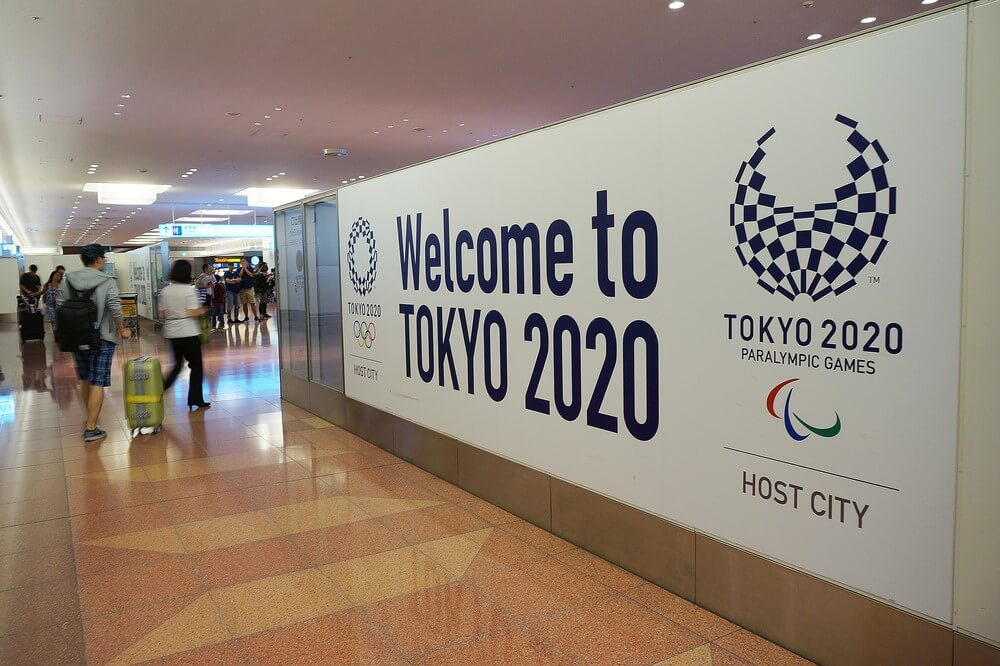July 23, 2021, marks the opening ceremony of the delayed Tokyo Olympics. However, Japan has barred all spectators from the highly anticipated international sports festival, which it hosts this summer, owing to rising COVID-19 infections. So, how does the decision may affect local aviation?
Tokyo Olympics: No flights, no fans
In addition to winning gold medals, the Japanese government is extremely focused on stringent precautionary measures to avoid an outbreak of COVID-19. Recently, Japan declared a state of emergency that’s meant to curb a wave of new infections. With more than 11,000 competitors expected to travel to Japan to compete in the Games, alongside thousands of officials and staff, protecting their safety and ensuring the virus does not spread is paramount.
So, it comes as no surprise that on June 16, 2021, one week before the start of the Tokyo Olympics, the Japanese Transport Ministry decided to temporarily limit the number of flights arriving at five Japanese airports, including Haneda Airport (HND), Narita International Airport (NRT), Chubu Centrair International Airport (NGO), Kansai International Airport (KIX), as well as Fukuoka Airport (FUK).
The ban was issued in order to prevent the spread of the virus as well as to avoid airport quarantine checks from being overwhelmed on the period between July 16 and July 22, 2021, which will see an expected increase in international flights as athletes and delegation officials arrive from overseas.
The government also asked foreign air carriers to reduce the number of passengers to 40 maximum per flight, with the exemption for travelers who are classes as in transit and those directly involved in the Olympics. This new rule is expected to be valid until the end of August 2021.
Meanwhile, for local airlines, the Transport Ministry has ordered that a maximum of 3,400 passengers travel per week.
These entry restrictions were also extended to the delegations that were supposed to attend the opening parade. According to the local media outlet, the Japan Times, delegations were halved. For instance, Spain, which has a total of 321 qualified athletes, was cleared to attend the parade with a delegation of 150 athletes, including seven coaches.
The Heads of the State and other officials have also faced cutbacks.
Due to growing infection rates, Japan is currently operating under a state of emergency. Only 30 officials from the United States, including the First Lady of the United States, Jill Biden, were allowed to enter the Opening Ceremony. In comparison to the last Olympic Games, which took place in Rio de Janeiro in 2016, approximately 40 officials were permitted to attend. Similarly, as many as 80 US political figures attended the sports festival in London in 2012.
At present, all foreign nationalities are banned from entering Japan as tourists and business purposes. This injunction will remain in place until the state of emergency is lifted.

Shutterstock / Travel_with_me
How may the state of the emergency impact local aviation?
The decision to ban international spectators may significantly impact Japanese aviation. But it is impossible to estimate the number of passengers who may have flown with Japanese airlines if spectators were permitted entry.
However, figures from the last two Summer Olympic Games provide an indication of the loss faced by the Japanese aviation industry, which is already struggling due to the COVID-19 crisis.
On August 24, 2016, the Mayor of Rio de Janeiro, Eduardo Pae, announced that Brazil’s 39 airports had welcomed approximately 1.17 million passengers during Rio 2016. 410,000 were foreign travelers.
Data from Statista.com suggest that as many as 137,000 passengers arrived at Rio from South America, and approximately 64,000 departed from various European cities. 47,000 visitors came from the US and 14,000 arrived from Central America.
On August 5, 2016, which was the opening day of Rio 2016, Rio de Janeiro recorded more than 90,000 arrivals via air transport. According to figures released by the country’s Secretariat of Civil Aviation, the country witnessed another peak in air traffic when recording almost 95,000 departures on August 22, 2016, the day after the Games ended. Brazilian experts surmised that Rio made approximately $2 billion profit from spectators alone.
During the London Olympics, which ran from July 27 to August 12, 2012, UK aviation authorities had to organize almost 4,000 additional flights in UK airspace. A report released by the UK Civil Aviation Authority suggested that over 800,000 passengers had passed through London’s airports for Olympic-related journeys. 470,000 were visitors from overseas.
According to the report, 54% of all flights arrived and departed at Heathrow Airport (LHR), while the second busiest airport, Gatwick Airport (LGW), served around 18%.
While the UK made somewhere in the region of €827 million (£709 million) profit from international visitors during the event, local analysts estimated that the country failed to receive a major financial boost from the Games.
Japanese aviation records low numbers
Meanwhile, the two biggest Japanese airlines, Japan Airlines (JAL) and ANA, have recorded low passenger numbers. From July 19, 2021, Japan Airlines carried 820,437 domestic and 54,984 international passengers. Data from JAL suggests that pre-pandemic the airlines served more than 2.9 million domestic passengers and 795,481 international travelers during the same period in 2019.
According to the ANA Group Traffic Results, published in early July 2021, the only data currently available (as of May 2021) comes from its competitor, Japan Airlines, which flew 796,369 domestic and 41,897 international passengers. Pre-COVID-19, the airline flew around 3,43 million passengers on its domestic network and 833,884 visitors from foreign countries. So, extra passengers visiting the Olympics sure would have helped.

